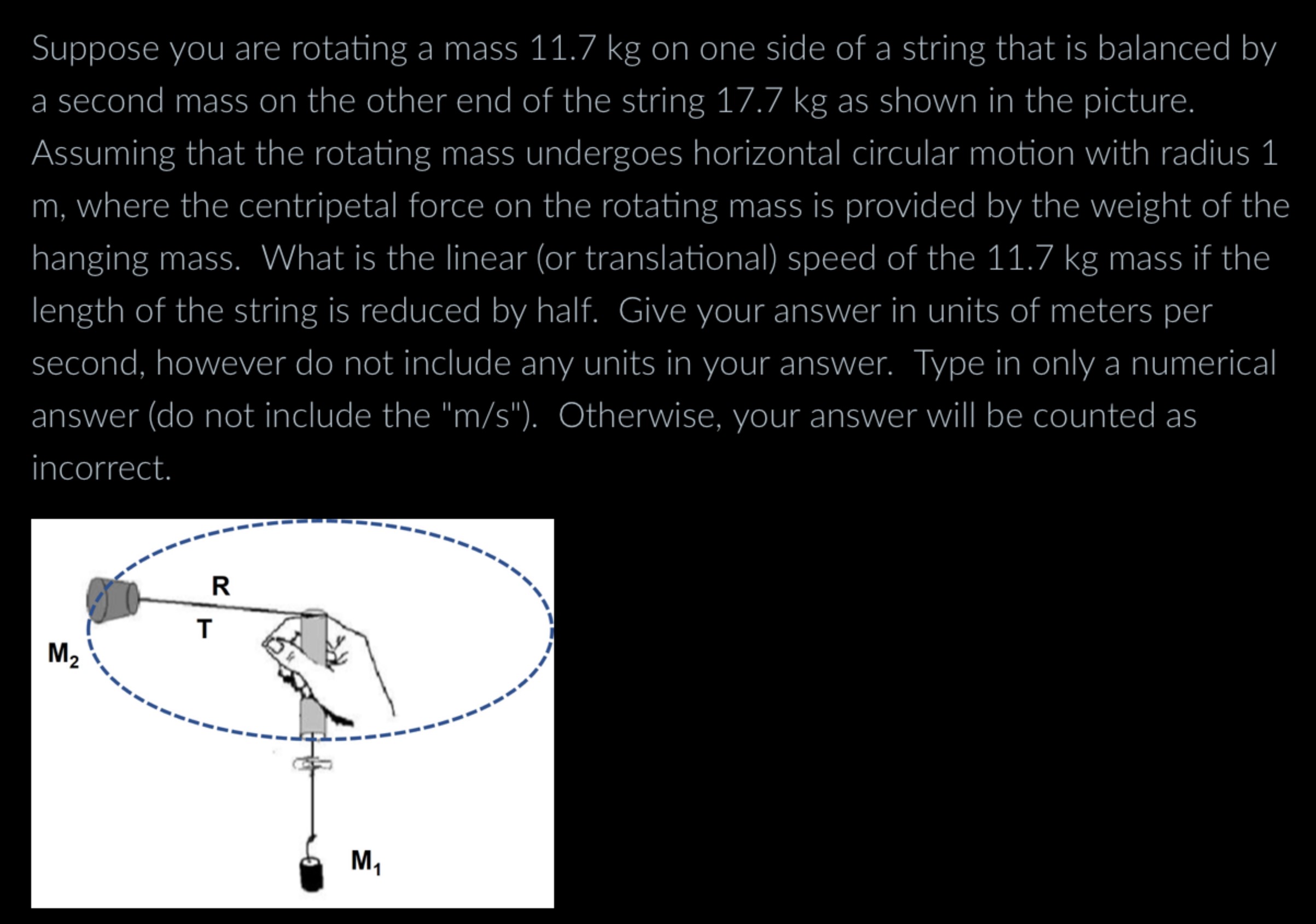Suppose you are rotating a mass 11.7 kg on one side of a string that is balanced by a second mass on the other end of the string 17.7 kg as shown in the picture. Assuming that the rotating mass undergoes horizontal circular motion with radius 1 m, where the centripetal force on the rotating mass is provided by the weight of the hanging mass. What is the linear (or translational) speed of the 11.7 kg mass if the length of the string is reduced by half. Give your answer in units of meters per second, however do not include any units in your answer. Type in only a numerical answer (do not include the "m/s"). Otherwise, your answer will be counted as incorrect.
